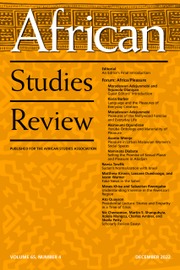Cultural heritage tourism is recognized as one of the fastest-growing tourism sectors (1). This type of tourism is a branch of cultural, ethnic, and educational special interest tourism, covering various elements of tourist behavior that range from exploring the physical remnants of the past to engaging with contemporary cultural traditions. Therefore, the book Cultural Heritage and Tourism in Africa, edited by Dallen J. Timothy, is a timely publication that presents an interesting and illuminating discussion on the history, status, and contemporary challenges of cultural heritage tourism in Africa. As the introductory chapter highlights, this form of tourism is among the fastest-growing segments. However, most existing literature on this topic has primarily covered regions outside of Africa. Therefore, this book, dedicated solely to the continent, significantly contributes to the literature on this subject.
Divided into eighteen chapters, this work emphasizes Africa’s unique challenges and perspectives, promoting a comprehensive understanding of its diverse narratives. The chapters include: Chapter One, focusing on “Africa’s Heritage and Tourism”; Chapter Two, exploring “Intangible Heritage as a Cultural Asset for African Tourism”; Chapter Three discussing “Indigenous Tourism in Africa”; Chapter Four examining “Cultural Events and Tourism in Africa”; Chapter Five covering “Religious Heritage, Tourism, and Pilgrimage in Africa” from historical, traditional, and contemporary viewpoints; Chapter Six highlighting the “Spatial Mismatch between Cities and Heritage Tourism Sites in Africa”; Chapter Seven looking into “Rural Heritage and Tourism in Africa”; Chapter Eight addressing “Growing Agri-heritage Tourism in Africa,” including its challenges and opportunities; Chapter Nine showcasing “Culinary Traditions and Heritage Foods in Africa”; Chapter Ten presenting “The Transatlantic Slave Trade: Africa’s Epitomous Heritage Tourism”; Chapter Eleven discussing “African Diaspora Tourism,” exploring concepts, issues, and prospects beyond slavery-oriented heritage; Chapter Twelve evaluating “Industrial Heritage Tourism in Africa,” considering its prospects and challenges; Chapter Thirteen investigating “Dark Tourism and ‘Painful Pasts’ in Africa,” looking at concepts, contexts, and challenges; Chapter Fourteen reflecting on “Colonialism, Post-colonialism and Its Heritage Imprint”; Chapter Fifteen examining “African Archaeology and Tourism”; Chapter Sixteen focusing on “Natural Heritage: Wildlife and Nature Reserves in the African Tourism Landscape”; Chapter Seventeen addressing “Climate Change, Cultural Heritage, and Tourism in Africa,” highlighting critical issues and changes; and finally, Chapter Eighteen posing the question: “Heritage Tourism in Africa: Where Do We Go from Here?”
Regarding contributions, one of the significant aspects of the book is its comprehensive coverage of various aspects of heritage tourism, including intangible heritage (Chapters Two, Four, and Nine), dissonant heritage (e.g., Chapters Ten, Eleven, Thirteen and Fourteen), contemporary issues like heritage tourism and climate change (Chapter Seventeen), and the future of heritage tourism on the continent (Chapter Eighteen). Indeed, numerous books have been published on the subject; however, when it comes to Africa, most have overlooked this specific type of tourism—namely, cultural heritage tourism—and have instead focused on tourism in general (e.g., Novelli et al., Reference Marina, Adu-Ampong and Ribeiro2021). Therefore, publishing a book of this nature makes a unique contribution to the field of tourism. Furthermore, in each chapter, the authors strive to include examples from various regions of the continent to enhance the discussions. This approach allows the reader to grasp the similarities and differences between countries and enhances the overall understanding of the subject through various case studies.
However, this approach has a shortcoming as the chapters become overly general, attempting to incorporate numerous examples from various parts of the continent into a single chapter. A better approach would be to have a chapter covering a single country on the continent. While such a book could be slightly lengthy—approximately fifty-five to sixty chapters—it would improve how each country is featured in the discussion. For instance, in Chapter Three, Kokel Melubo presents a fascinating discussion of the situation, opportunities, and challenges facing African Indigenous tourism (43). A thorough analysis of the chapter highlights that the author possesses more excellent knowledge about the Maasai case in Tanzania. Still, he incorporates several examples from other parts of the continent to broaden the chapter’s focus on Africa. However, these other examples are not presented as effectively as those from the Maasai group. Nevertheless, this should not detract from the fact that the book is a magnificent read, deserving of a place in the collection of anyone interested in the subject matter or the continent as a cultural heritage attraction.


